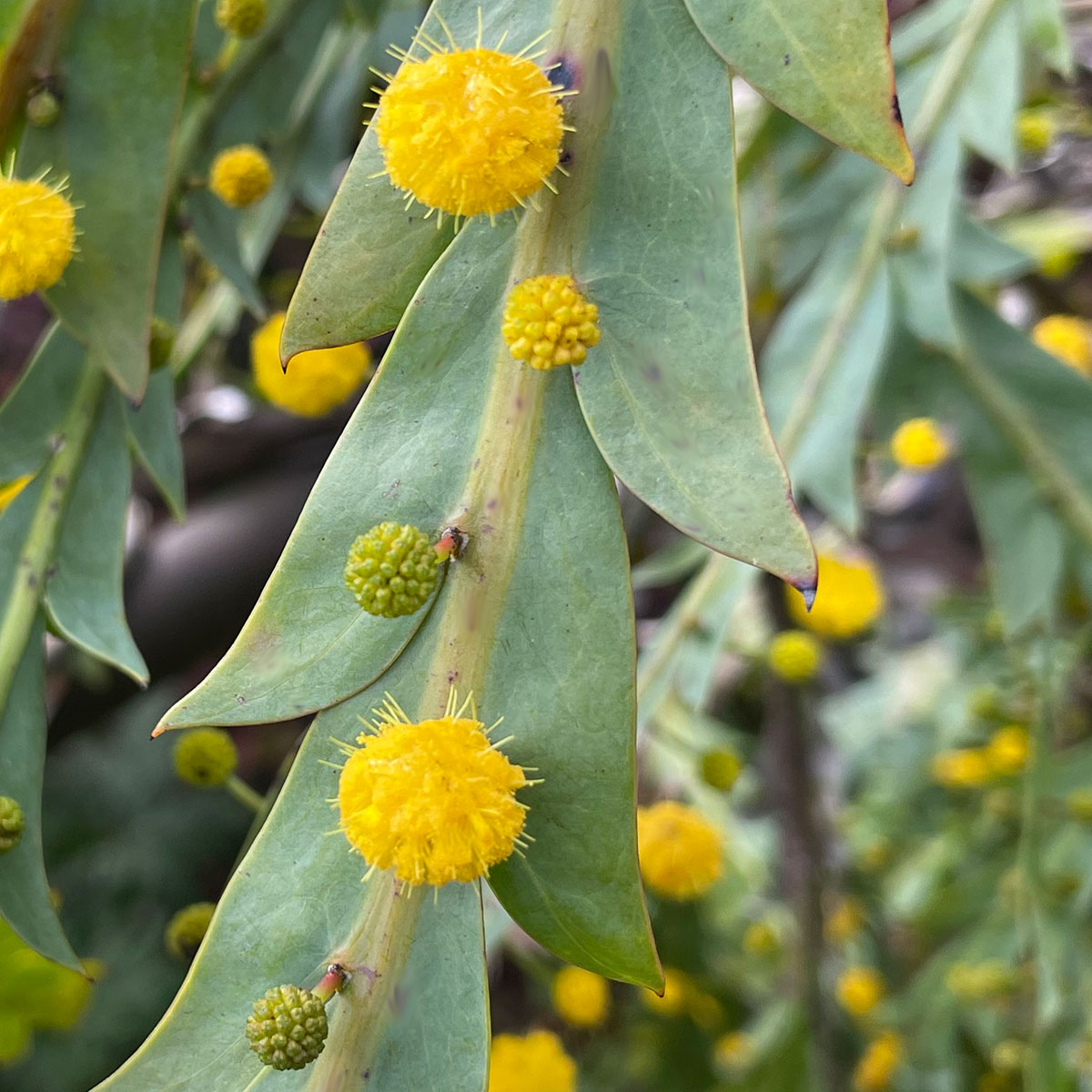Flat Leaf Wattle
An unusual small shrub, Acacia glaucoptera is distinguished by its flat leaves. The foliage itself is a mid-green, with a winged appearance. New growth is tinged with red to pink, which is an added attraction.
Grown for its ornamental appearance, it is spiky, although the spikes are not harsh, and make an interesting barrier plant. This is a prostrate to semi-prostrate shrub reaching around 1.2m tall and 2m in width.

The flowers themselves are small yellow balls that sit close to the stems. They open sequentially from low on the stem to the tip.
Like many Acacia species, it grows well in poor and sandy soils and can be grown in containers.
How to Grow Flat Leaf Wattle
It grows naturally north of Albany and east of Esperance.
Best in well-drained soil and a position with good morning sun and a little protection from very hot afternoon sun in summer months.
This is a plant that likes sandy, well-drained soil, so amend the soil accordingly.
If your soil is not free-draining, try growing Acacia glaucoptera in a tall pot with the bottom removed. The potting mix should be mainly coarse-washed river sand with 10 percent potting mix. The roots will find their way through to the soil below; however, will not become waterlogged to the extent that it causes problems.
Once established, watering is not required.
Pruning and Fertiliser
- Prune back to shape and size immediately after flowering. Also, remove any dead wood to maintain appearance.
- A slow-release Native Plant fertiliser once a year after flowering should be sufficient.
Summary Information
- Botanical name – Acacia glaucoptera
- Common names – Clay Wattle, Flat Leaf Wattle
- Family – Fabaceae
- Origins – Western Australia
- Position – Full sun to a little shade
- Soil – Well drained
- Height – To around 1.2m
- Spread – To around 2m
- Growth rate – Medium
- Flowers – Small yellow balls
- Flowering time – Spring
- Foliage – Flat, green
- Frost tolerant – Yes
- Drought tolerant – Yes
